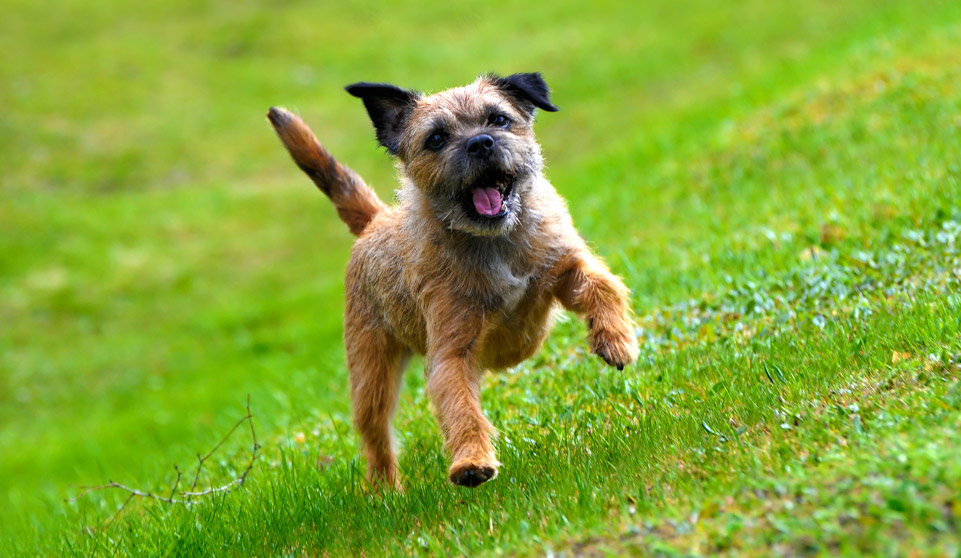Border Terrier Information

History
The Border Terrier dates back to the 18th century and originated on the border of Scotland and Northumberland, England and is one of the oldest terrier types in Great Britain. They were originally bred as fox and vermin hunters
The Border Terrier was officially recognised by the British Kennel Club in 1920, and by the American Kennel Club (AKC) in 1930.
Characteristics
- Rough haired
- Active
- Eager to please
- Affectionate
- Obedient
Border Terrier Temperament & Size
This small dog is independent and can sometimes be quiet stubborn. However, with correct training they are obedient and because of their lively, fun nature can make loving, loyal family pets.
They have a short double coat with a coarse, wiry weather resistant outer coat in colours including grizzle-and-tan, blue-and-tan, red, or wheaten. They shed very little and only require weekly brushing.
Exercise caution around birds, rabbits, hamsters, and other small animals because they may hunt them because of their predatory instinct.
Border Terrier Life Span & Health Problems
These dogs have an average lifespan of 13 – 16 years
Common Illnesses include;
- Hereditary Cataracts – Clouding of the lens causing blurred vision to blindness.
- Patellar Luxation – Partial to full dislocation of one or both kneecaps.
- Legg Calves Perthes Disease – Altered blood supply to the head of the thigh bone causes disintegration of bone and lameness./li>
- Progressive Retinal atrophy – Degeneration of the retina causing night blindness then total blindness.
- Canine Epitheloid Cramping Syndrome – Resulting in recurrent seizures in this breed.
- Hip Dysplasia – Genetic condition that cause abnormal development of the elbow and hip joints in young dogs. This can lead to early onset degenerative joint disease.
- Heart Defects – these defects may lead to exercise intolerance, shortness of breath, and in some cases, premature death.
